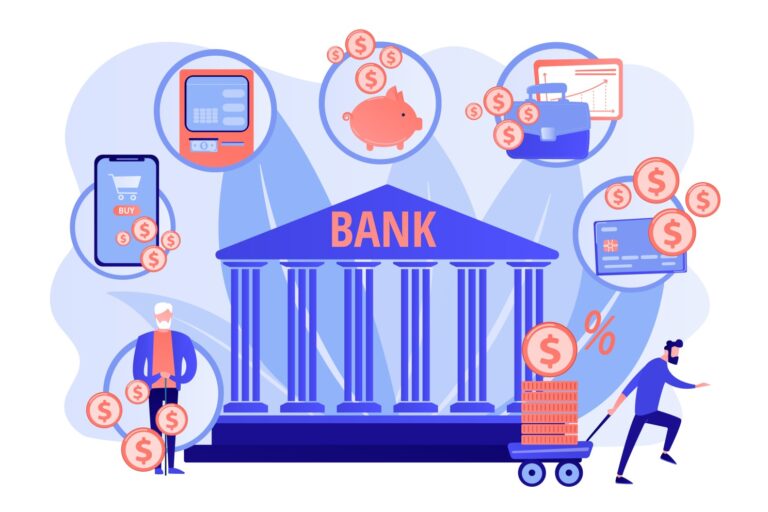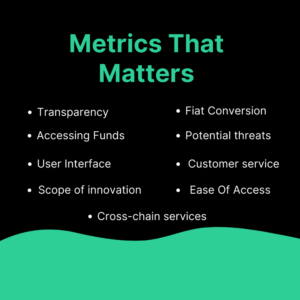Cryptocurrencies exposed the world to a decentralized financial system concept through blockchain technology.
While cryptocurrencies function as both fungible money and a marketable asset, the blockchain has enabled them to be available to the general public.
Because of the technology’s multifunctionality, the existing financial industry has adapted to it, resulting in a world of financial services centered on it.
This cryptocurrency and blockchain financial services realm may now be divided into two groups. Decentralized Finance (DeFi) and Centralized Finance (CeFi) are two.
While both of these groups have the same goal in mind, their paths to get there differ. To begin, let’s look at their definitions.
What exactly is DeFi?
Decentralized Finance, or DeFi, uses a decentralized network to provide financial services like trading, lending, derivatives, and other similar services.
There is no mediator in the form of a person or an organization in DeFi.
Instead, the system relies on smart contracts and other protocols that allow two parties to exchange services without the need for a middleman.

Term Explained: A smart contract is a self-executing programmable code that runs itself when its underlying pre-agreed instructions are met on a blockchain network.
Surprisingly, DeFi’s operation is consistent with the inherent nature of cryptocurrencies and blockchain, which is that they are decentralized.
DeFi eliminates the necessity for banks and financial institutions, allowing anybody to use the blockchain network and do anything they want with their money.
What is CeFi?
Centralized Finance, or CeFi, is analogous to the present financial sector, in which an organization or middle man facilitates a financial service such as a trade, loan, exchange, or other, with the organization or middle man typically being the major decision in the process.
The company acts as a point of contact for customers, providing help and resolving complaints.

Cryptocurrency exchanges are an example of a CeFi company in the crypto realm, where customers register to use the exchange’s services.
A user allows a centralized organization to utilize their funds to obtain the requested services, precisely as they would with real-world financial service firms.
Determining the Difference Between DeFi and CeFi
One approach to grasp the complexities of this issue is to look at the benefits of both DeFi and CeFi before moving on to the disadvantages.
However, this prevents you from analyzing both financial categories on the same parameter simultaneously.
In the following discussion, we will examine the trends and services provided in both the DeFi and CeFi sectors.
Some financial organizations in any sector may not have all of the characteristics listed.
However, popular tendencies in both industries are explored for the sake of this debate. So, here’s a comparison of the two services based on the metrics that matter:
#1 User Interface
Because the CeFi sector comprises large financial institutions and organizations, they provide a simple and user-friendly interface for the best possible client service.
Because most DeFi networks lack this feature, they may appear challenging to use at first.
#2 Accessing Funds
CeFi is based on the idea that a user must transfer money to a CeFi institution. The user can then dictate how the money is used, but the institution handles the funds.
This also applies to cryptocurrencies that are purchased and sold. The crypto is stored in the institution’s wallet, and the user does not have access to it.
Instead, DeFi allows users to spend their money whatever they choose.
A user just has to connect to the DeFi network, assigning the user a serial number for identification. Once in the network, the user can spend their cash on anything that the network supports.
#3 Fiat conversion
CeFi entities have a vital feature: fiat conversion. The organization allows users to change their money into and out of cryptos. Members of DeFi networks do not have access to this sort of service.
#4 Ease of Access
After completing a KYC procedure, CeFi requires users to register on the exchange by providing personal information. As a result, institutions might decline to provide service to a consumer.
DeFi, on the other hand, just registers a user regardless of their identity or origin (subject to basic conditions).

#5 Transparency
DeFi is based on the decentralization idea. As a result, the ledger makes all network information, including past transactions, existing members, and other critical data, publicly available.
CeFi institutions, on the other hand, operate quietly behind the scenes, enabling trades.
#6 Cross-chain services
CeFi enables cross-chain services, allowing users to swap one cryptocurrency or token for another on the same platform. For instance, you may exchange Bitcoin for Litecoin or vice versa.
However, most DeFi networks are unable to enable such a transaction. Only a handful employ protocols such as ‘atomic cross-chain swaps,’ which allow one crypto asset to be exchanged for another.
However, this switch necessitates code that might be difficult at times.
#7 Customer service
CeFi is a crowded market, with each exchange and institution fighting for the customer’s attention.
As a result, the customer service provided by this industry is second to none, with particular divisions dedicated to meeting the demands of customers.
Again, DeFi networks are self-contained networks that do not often include customer assistance.
#8 Potential threats
The nightmare hacking of exchanges or other organizations is a major hazard related to CeFi.
Even though exchanges and similar providers frequently employ cutting-edge security methods to defend themselves, exchange heists nonetheless hit the headlines every few months.
A DeFi system’s main foe, on the other hand, is the network itself. Any weakness in the line of code, or a bug, can put the users’ funds at risk.
#9 Scope of innovation
When it comes to CeFi services, there isn’t much to innovate about. However, because blockchain is still in its infancy, with groundbreaking developments occurring regularly, DeFi networks are rapidly evolving.
Users will get more automated benefits as a result of this.
Which is the superior option?
Unfortunately, there isn’t a clear answer. Here, the trader must examine his requirements to determine which aspects are most important.
If you’re concerned about losing control of your money, DeFi is at the top of the list.
Transferring funds to intermediary businesses, on the other hand, is a daily action for millions of people who trade stocks. As a result, this should not be a significant worry.
Similarly, whether fiat conversion or cross-chain transactions are essential aspects of your bitcoin usage, CeFi stands out as the most dependable solution available.
As previously stated, quick cross-chain swaps can make these services more accessible in the DeFi ecosystem.
You can quickly identify the proper DeFi network to take advantage of cross-chain services. Perhaps, in the long term, a hybrid blockchain financial system will develop, combining the benefits of both types of financial services.
But, for the time being, that is not the case. So don’t let the uncertainty about which service deter you from trading. Try them both out and see which one best suits your wants and requirements.
Final Words
That’s it for the quick guide, I hope that my content added a bit value to your time. If you think any other explanation could’ve been added, feel free to use the comment section and generate awareness within our community.
Till then, you can follow me to stay updated with the trends and get an insight about the markets. There’s a lot more coming in the upcoming days so do SUBSCRIBE the newsletter.
If you like the content, feel free to share it within our community and if you didn’t liked the content, do let me know that too. So I can improvise next time!
Stay Safe, Stay Healthy and Take care of yourself and your Loved Ones.